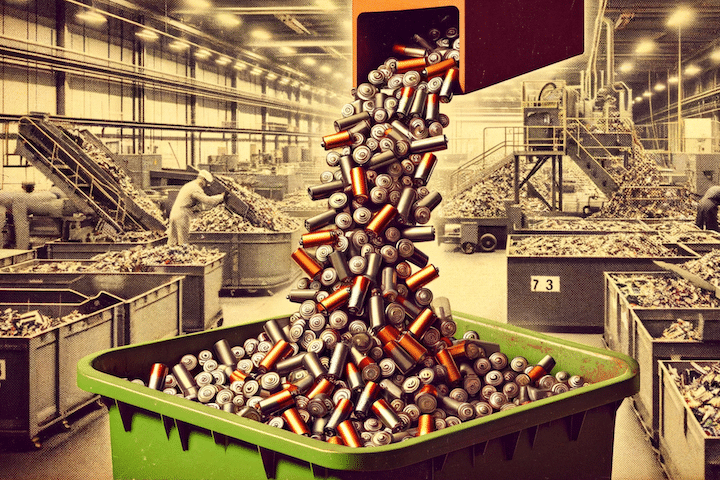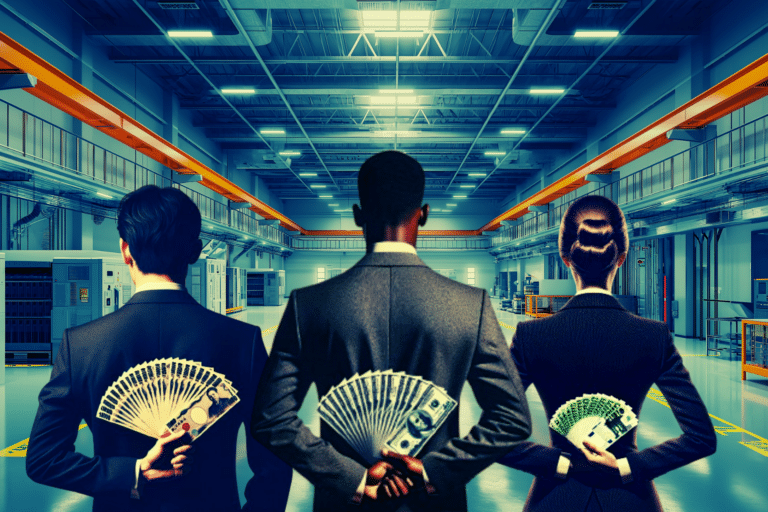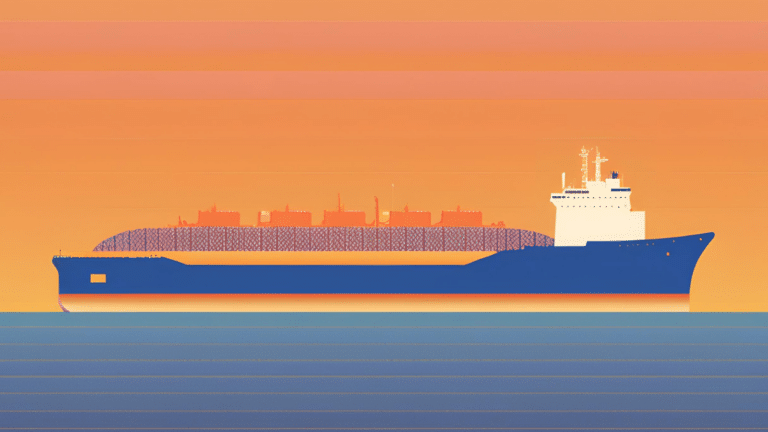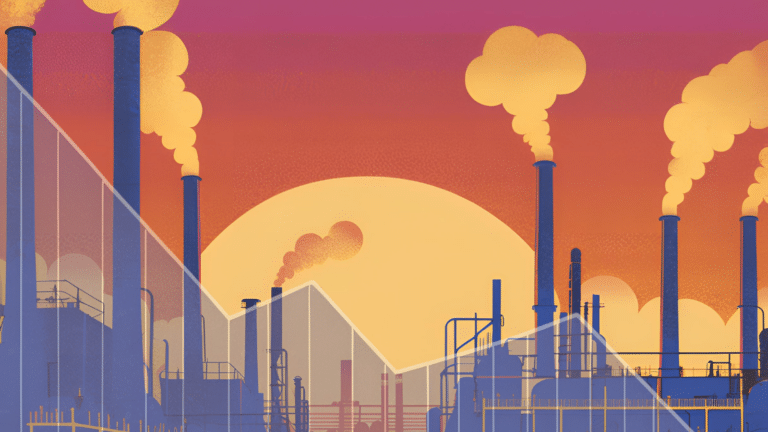Melissa Lott: [00:00:00] So we’re going to be doing something a little bit different today. And as you’ll hear in a moment, this episode is actually a collaboration between the Big Switch and this other podcast called the Carbon Copy. I think you’re going to like it. It explains the changing planet through the lens of current events. It’s hosted by Steven Lacey. He’s a veteran environmental journalist, and he also leads the team at Postscript Media that works with us on the Big Switch. The show strongly complement each other, and if you like what you hear, well, go subscribe to the carbon copy wherever you’re listening to this right now. The big switch will be back in two weeks where we’ll have new episodes on some of the thorniest and most complicated areas of the economy. I’m talking industry. We’re talking about how we get to net zero in chemicals, concrete and steel. And I just can’t wait. It’s going to be a lot of fun. So stay tuned. [00:00:42][42.2]
Steven Lacey: [00:00:45] From the studios of Postscript Media and Canary Media, Dr. Melissa Lot has a superpower. Now, I’ve been on a lot of Zoom calls with her over the past year, and I’ve seen this in action. She can visualize the energy embodied in everything a T-shirt, a plane ticket, whatever it is you’re eating. [00:01:02][16.6]
Melissa Lott: [00:01:03] I can it’s is it a superpower or is it a curse? I think it’s really interesting, but I can’t turn that off. Everywhere I look, even right now. Looking around the room I’m in, I can see energy and all the pieces around me. [00:01:14][11.5]
Steven Lacey: [00:01:15] Must be both empowering and mentally taxing. [00:01:17][2.0]
Melissa Lott: [00:01:18] Yeah. Yeah, that’s true. When you’re. When you’re eating an ice cream cone with your kid and you’re like, Oh, you know, the power that it took to actually freezes to keep it cold. And where did this cone come from? I’m sure some day my kid is going to go, Mom, stop telling me about life cycles like that one. [00:01:36][17.7]
Steven Lacey: [00:01:36] And someday when COVID fritz out the economy, Melissa experienced the same things we all did. There were childcare disruptions, travel freeze, just a fear of the unknown. And then she started noticing other visible shifts, shifts with major energy consequences. [00:01:51][14.6]
Melissa Lott: [00:01:52] I remember one day driving through the neighborhood to go pick up groceries because we got a curbside spot, big lock, and in the entire drive to the grocery store until I hit that parking lot, all I saw. No joke. All I saw were delivery vans. So as Amazon vans, you know, the white big box trucks. And at the time, all those companies were renting out, you know, Hertz and Enterprise. Like any van they could get their hands on just to deliver stuff. That’s all. I saw the entire ride to the grocery store. [00:02:16][23.8]
Steven Lacey: [00:02:16] Now, you didn’t need a super power to see all the delivery trucks suddenly on the roads. They were everywhere. But Melissa could see something else. Growing demand for diesel. [00:02:24][7.9]
Melissa Lott: [00:02:25] And, you know, we can see in transportation that, like diesel demand is really up again. And this is coming from a lot of freight, a lot of trucks on the road, moving goods around, moving all that stuff that we’re buying. [00:02:35][10.1]
Newsreel: [00:02:36] Experts say it’s due to a surge in online ordering during the pandemic and companies like Amazon adding more trucks for even faster delivery. A recent survey found that nationwide, over the course of 2020, total deliveries rose by almost 28%. Groceries, in particular, jumped by. [00:02:53][17.2]
Steven Lacey: [00:02:53] A staggering 103%. It wasn’t just delivery trucks. For Melissa, every change to our lives meant a change to the energy system. And it raised a question Would they help or hurt the path to a carbon free economy? [00:03:05][12.0]
Melissa Lott: [00:03:06] There was so much speculation of, okay, we’re all working from home for now. Will this be the big change? And all of a sudden nobody’s commuting anymore? You know, those are the extreme, extreme ones saying that we’re not going to have it in offices anymore. No one’s going to be getting, you know, commuting to work every day. But then also on the transportation front, where are we going to see a continued, you know, low levels of people driving around low levels of fuel use? Or on the flip side, where are we going to see not just a rebound, but a mega rebound where all of a sudden demand shot up because people aren’t willing to get on busses and weren’t willing to get on, you know, the metro on trains. [00:03:39][32.8]
Steven Lacey: [00:03:42] It’s two years later. We’ve got the data. A new report on how emissions from fossil fuels have shifted since the pandemic started. And in some cases, they’ve roared back faster than expected. [00:03:52][10.6]
Melissa Lott: [00:03:54] To sum it up, one of my colleagues said, well, not surprising, but there we are. You know, so now what do we do when it comes to policy as we go into a net zero world? [00:04:02][8.3]
Steven Lacey: [00:04:05] This is the carbon copy. I’m Stephen Lacey. This week, we’ve got a conversation with Dr. Melissa Lott, host of The Big Switch. We’ll examine two pandemic related spikes in fossil fuels, one in transportation and one in electric power. What do they tell us about what has shifted and what hasn’t? Across America’s carbon dependent economy. There we are. So where are we? [00:04:32][27.2]
Melissa Lott: [00:04:33] There we are. So overall, you know, what we’ve seen is that, you know, within each of the different sectors, we have seen some degree of rebound in emissions. [00:04:41][8.3]
Steven Lacey: [00:04:44] That’s the big headline out of a new report about 2021 emissions. The report is from Rhodium Group, a research and consulting firm. And Rhodium says that carbon pollution bounced back sharply after a big drop off in 2020. I wanted to talk to Melissa because she’s one of the people paying close attention to reports like this. She’s the director of research at Columbia Center on Global Energy Policy. She also hosts another podcast that we produce at Post script called The Big Switch. It’s about the big technology and policy changes. We need to decarbonize the economy. To self-described energy nerds like Melissa, this rebound was not really a surprise. Once lockdowns lifted in, the public started getting vaccines. The general consensus was that economic activity and associated pollution would jump quickly, but the rebound actually wasn’t as strong as some thought it would be. [00:05:29][45.0]
Melissa Lott: [00:05:30] And so overall, the economic recovery has been a little more start and stop than we may have expected with the different variants coming through. On one hand, we’ve had vaccines, on the other hand, we’ve had all these variants and we’ve seen some of those mixed effects. So starts and stops and unpredictable things happening in different parts of the economy. [00:05:47][16.7]
Steven Lacey: [00:05:47] The surprising thing about 2021 is not that emissions rebounded, but how and where that pollution is coming from. Like how the spike in online shopping drove up demand for delivery vans, which in turn drove up demand for diesel. [00:06:00][12.5]
Melissa Lott: [00:06:05] So transportation has decreased overall by I think it was 15% from 2019 to 2020, and we’ve seen it come back by 10%. And a lot of that is driven, you know, by actually a lot of freight and a lot of Delius. So aviation still down. But you know what? We’re buying a lot of stuff and it’s moving around on the roads. Conversely, like if you look at industry and power and buildings, you’re seeing things coming back to different degrees. So, you know, industry dropped by about 6% and now it’s back, not quite 4%. So it’s it’s, you know, two thirds of the way, not quite a little bit less than that back. Electric power. You know, we have seen people going back to the offices. We have seen some shifts in terms of power demand. So that’s back up overall, you know, went down 10%, this back up six and a half percent. So, you know, this is what we’re seeing across the economy. Some of the stuff is what we predicted would happen. So it’s people getting back in their cars and people buying a lot of stuff and people staying out of the air right now. But I don’t think we’re exactly where we thought we would be in 2021 going into 2022. [00:07:07][61.7]
Steven Lacey: [00:07:08] So in the transportation sector, where did we think we would be and how does that compare with where we are? [00:07:16][7.2]
Melissa Lott: [00:07:16] So overall, on the transportation sector, you know, this is where we saw the largest increase in emissions in 2021, according to this preliminary data from Rhodium Group. And you know, what this is reflecting is actually this high demand for freight transport. So for trucks on the road to move around goods that we’re buying overall, I think what is surprising to some, maybe surprising to a lot of people is that if you look at gasoline demand for passenger transport, it’s actually been pretty flat. So some people were saying, oh, it’s going to shoot rocket up as people go back to the office, but they won’t get on the metro or they won’t get on busses. They’re going to be using their cars. So we’re going to see gasoline go way up. Other people were saying, no, everyone’s going to stay home, is going to go down. Actually, it stayed flat. That was a little bit surprising to a lot of people. Overall, jet fuel is still way down. And I don’t think that surprises to many people that we still aren’t flying like we used to. [00:08:08][52.0]
Steven Lacey: [00:08:09] Transportation is important because the changes to how we work, how we go to school, how we buy things, change the way we get around. That caused a rise in diesel, a stagnation in gasoline and a precipitous drop in jet fuel. Those are some of the major trends we saw out of 2021. But what I wanted to know from Melissa was which of these trends is going to last. So long term, what do we expect to stick and what do we expect to be a passing trend in the transportation sector. [00:08:42][33.4]
Melissa Lott: [00:08:43] Sitting in the short term? You know, we do expect people to be going back to work more than they were before. We do expect people to continue buying things. And there’s a lot of interesting research starting to come out about how sticky we think our changes in buying trends are going to be. And it seems like they’d be pretty sticky. So the in the longer term, I think what’s really interesting to follow is the major changes we’re seeing in passenger transport around electric vehicles and electrification of vehicles. We really are seeing momentum there and a lot of states stepping up and creating coalitions, saying we’re going to build up the infrastructure to make this a long lasting trend. But also in heavy duty trucking, I think some of the most interesting stuff we’re seeing is around regulations to reduce air pollution from these trucks. I’m thinking about in California, all the stuff they’re doing around smog check regulations to actually make sure that as we have these trucks on the road, that actually we don’t just see an endless increase in air pollution. And so that’s a long term trend. I don’t see that going backwards. [00:09:41][57.7]
Steven Lacey: [00:09:44] For a long time, coal was king in America. It’s been the dominant source of fuel for electricity since the middle of the 20th century. But starting in 2007, it declined steadily. 15 years ago, coal made up half of the electricity produced in the U.S.. In 2020, it fell to 19%. But in 2021, coal use increased by double digits, even though demand for power increased by only a few percentage points. This shift in favor of coal may not last very long, but it does tell us something about how hard the transition away from fossil fuels will be, even with extremely cheap wind and solar. [00:10:18][34.5]
Melissa Lott: [00:10:19] Yeah, so this is really fascinating on my level. So overall we saw an electric power, which is something like just under 30% and not quite a third of U.S. emissions. We saw the second largest increase behind transportation in terms of greenhouse gases, and it was driven by coal. [00:10:33][13.4]
Steven Lacey: [00:10:33] So what happened with coal over the last decade? [00:10:36][2.1]
Melissa Lott: [00:10:36] So we look at overall electric power, and this is where coal plays a big role in the economy. What we saw is that cheap natural gas and cheap renewables came in strong and they said, you know what, We are actually going to displace a lot of coal in the system. Coal is no longer going to be this, you know, cheap leader in terms of supplying electricity, cheap natural gas and cheap renewables in particular, wind and solar are going to come in and replace it. And so we saw coal have a declining role overall. [00:11:03][26.1]
Steven Lacey: [00:11:03] And so most people thought this trend would continue because renewables are only getting cheaper. Natural gas prices have stayed low, but there are still a lot of coal plants just sitting there on the electric grid. So those coal plants ramp back up when you see high natural gas prices. Is that what happened? [00:11:20][16.7]
Melissa Lott: [00:11:21] That’s what happened in a lot of cases. So in some parts of the country, coal is still competitive a lot of the time, or at least competitive enough that you don’t shut down the plant. It just runs less of the time. It’s producing less electricity. And so when natural gas got more expensive, coal said, hey, I’m cheaper, but, you know, let me back in, coach. And all of a sudden it was running more than it had before, more than it had in a number of years. And so we saw emissions go up with that. [00:11:45][24.2]
Steven Lacey: [00:11:46] The consensus has been that coal is dying or is basically dead in the American electric sector. But this tells us that that that is not true. [00:11:57][11.1]
Melissa Lott: [00:11:58] It tells us it’s not true. It also highlights how different parts of the countries have different markets for coal is more or less competitive. So there’s some parts of the country I’m thinking about some pockets in the West where actually coal still makes it in the market. It’s not competitive. It’s still alive. [00:12:13][15.8]
Steven Lacey: [00:12:17] This highlights an uncomfortable reality for America. Fossil gas has been the biggest factor in the decline of coal. Even though renewables are booming. Our economy’s relationship with fossil gas is key to understanding what happened with coal this year. So help us understand this because wind and solar are the cheapest new resources that you can develop. And if they’re so cheap and getting cheaper and cheaper, why can’t you just use them to close down all these coal plants faster? Why do we see this spike. [00:12:47][29.5]
Melissa Lott: [00:12:48] Of a bunch of coal in the system as well as other technologies? Because at the end of the day, wind and solar are great, but they’re not around all the time. They’re not able to produce electricity. 24 seven 365. They do a great job, but there’s still gaps and those gaps can be bigger or smaller in different parts of the country during different times of the year. And the reality is we need to keep the lights on every day, all day. And so what you end up with is to keep prices low on your electricity bills. You end up with a mix of things. You have your wind and your solar, but you also need what we call dispatchable power for power. So stuff that just is can be turned on any time of the day or night. And that’s where coal comes in and that’s where natural gas comes in. [00:13:26][38.5]
Steven Lacey: [00:13:27] Is this coal comeback short term or long term? How do you read it? [00:13:30][2.9]
Melissa Lott: [00:13:30] Whether that’s coal come back to short or long term, I think depends a lot on what decisions we make in policy in the near term. There are so many states and cities that are saying we’re going to move to net zero electricity, we’re going to move to zero emissions. So in that equation, coal has a real tough spot. So I can’t see coal roaring back to its glory days of a few decades ago. I don’t think anyone sees that. I personally think it’ll be shorter term. [00:13:54][24.3]
Steven Lacey: [00:13:59] As you’re reading this analysis from Rhodium Group, what’s going through your mind about this transition. [00:14:05][5.3]
Melissa Lott: [00:14:06] Just how far we have to go and how little time we actually have to get there. At the beginning of all this, at the beginning of COVID and when emissions were dropping, the number one thing that we all kept saying was the infrastructure has to change or else all these emissions are just going to come roaring back and that’s not going to work. So when I look at these big drops, I just think about how fast we need to move our infrastructure to net zero if we want to keep emissions down. There’s just so far to go. [00:14:30][24.7]
Steven Lacey: [00:14:31] This pandemic has exposed so many flaws across our economy, in our political systems, and problems that were already there have been exacerbated by the pandemic. Does this expose any particular flaws in the energy transition or the energy system that we knew were there but are now staring us in the face? [00:14:52][20.6]
Melissa Lott: [00:14:53] In the energy transition, it shows us how much prices matter. When we look at these numbers, to me at least, because I think about the one in three Americans that are currently energy insecure in this country right now, they either can’t pay their bills or they’re not turning on their air conditioning or heating and making their home healthy to be in because they know they can’t pay the bill if they do turn it on. And when we go through this transition, we have to keep it affordable. We have to keep the costs down or those numbers are just going to get worse and those gaps are just going to get worse. At the same time, we have this tension where the air pollution from these coal plants and the air pollution from these diesel trucks, they don’t affect us all the same. Like air pollution is something that affects all of us. But certain communities, those near ports, those near these big shipping distribution centers, you know, where all the trucks come in like they feel it more, the air pollution is worse in these areas. And so really, we have to grapple with these equity questions in the transition around affordability and around these health impacts. [00:15:52][59.7]
Steven Lacey: [00:15:56] What does this tell us about the unpredictability of that pathway to getting to zero? [00:16:01][4.7]
Melissa Lott: [00:16:02] I think it’s tempting to look at these lines of admissions on graphs that we see all over the place. And it’s so smooth. You know, it seems like such a smooth transition if we put our minds to it. The reality is the transition is going to be bumpy. It’s going to be false starts and stops. It’s something that is happening in the middle of all of our lives. And so we should expect those bumps. And those bumps don’t mean we’re not going to get to net zero. They just mean that that smooth path isn’t the reality. We’re going to live as we get there. [00:16:27][25.7]
Steven Lacey: [00:16:32] Dr. Melissa Lott is the director of research at Columbia University’s Center on Global Energy Policy. She’s also host of another Post-Script podcast called The Big Switch. We make that in collaboration with Columbia. It breaks down the economy part by part. It explains how we can remove carbon emissions from each piece. If you haven’t already, go check out their other episodes. You can find them wherever you’re listening to this show. And what you should also know is that the pandemic turned Melissa into a chef with exquisite taste. [00:16:59][27.4]
Melissa Lott: [00:16:59] Like everyone started cooking from home and, like, baking sourdough bread and all that stuff. I never got into this hour, though, but I did a lot of other things. You know, I learned how to make flan. I don’t know. Just a lot of cooking at home. [00:17:10][10.6]
Steven Lacey: [00:17:11] It’s my favorite. Kind of sweet. [00:17:12][1.5]
Melissa Lott: [00:17:13] Yeah. I don’t. [00:17:14][0.5]
Steven Lacey: [00:17:14] Know. One of my type. [00:17:15][0.7]
Melissa Lott: [00:17:15] It’s really delicious. [00:17:15][0.5]
Steven Lacey: [00:17:16] The Carbon Copy is a co-production of Postscript Media and Canary Media. Our producers are Jamie Kiser, Daniel Waldorf, Davina Bouygues and Alexandria. Her Sean Marquand makes the episode and composed our theme. Original music came from Echo, French and Blue Dot sessions, thanks to Canary for their partnership. Thanks to all of you for listening and make sure to listen to our companion podcast. Catalyst with Shell can find it at Canary Media or any podcast app you get a lot of listening ahead of. You join us here next week. I’m Stephen Lacey. This is the carbon copy. [00:17:16][0.0]
[970.1]











